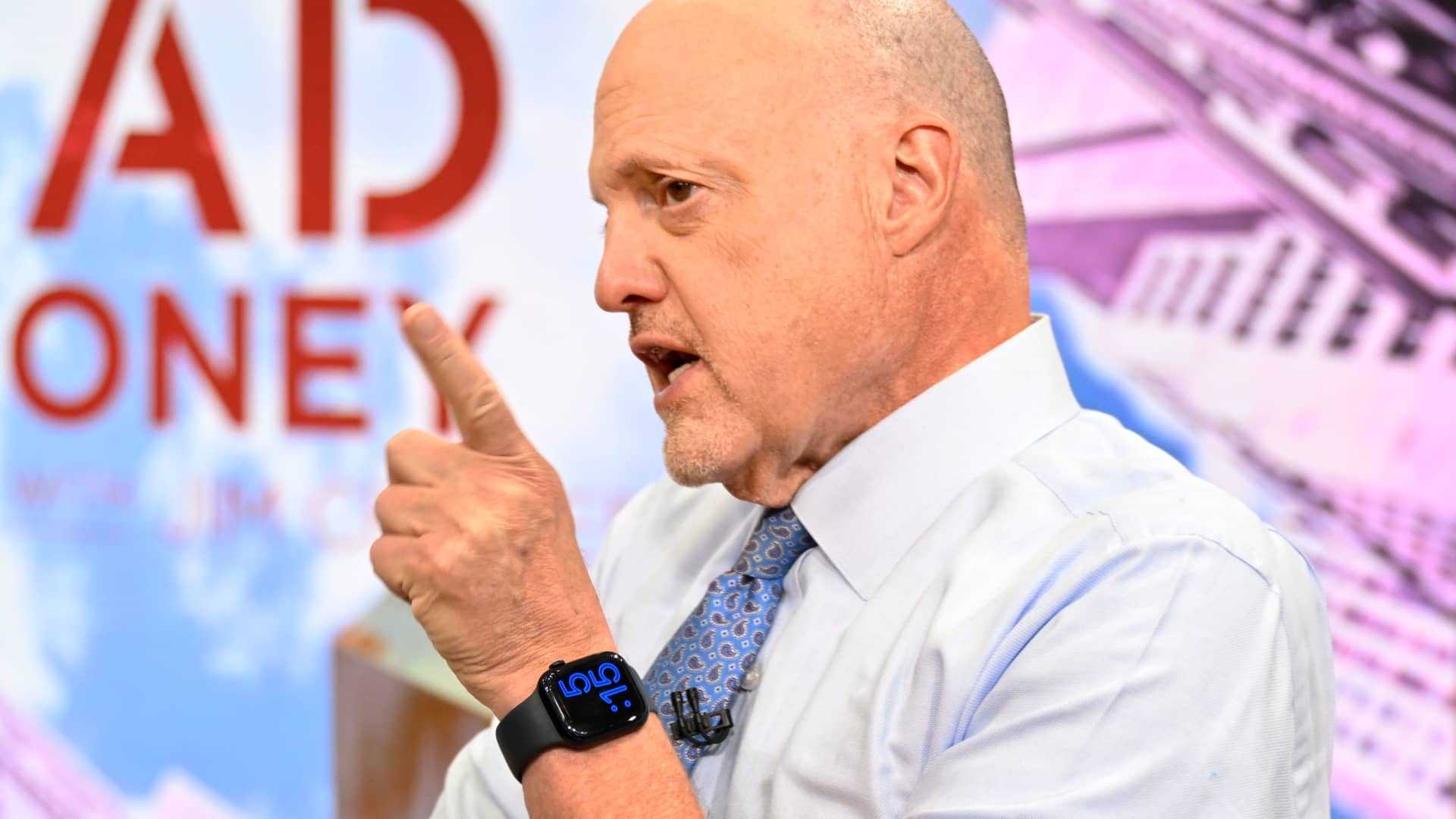Navigating Market Turbulence: Jim Cramer’s Post-Dot-Com Playbook for Today’s Investors
Renowned investor and CNBC host Jim Cramer has urged investors to adopt strategies from the post-dot-com era to weather today’s volatile markets. Speaking on his “Mad Money” show this week, Cramer emphasized patience, selective stock-picking, and disciplined risk management—tactics that helped survivors thrive after the 2000 crash. His advice comes as inflation, geopolitical tensions, and tech-sector corrections rattle global markets.
Why the Post-Dot-Com Era Holds Critical Lessons
The dot-com bubble’s burst in 2000 wiped out $5 trillion in market value, but investors who adapted emerged stronger. Cramer highlights parallels between then and now: overvalued tech stocks, erratic Fed policies, and a shift from speculative frenzy to fundamentals. “The survivors didn’t panic—they recalibrated,” he noted. “Today’s market demands the same rigor.”
Data supports his argument. A 2022 J.P. Morgan analysis found that companies with strong balance sheets post-2000 outperformed the S&P 500 by 34% over the next decade. Similarly, a Goldman Sachs report warns that 40% of today’s tech firms risk negative cash flow if interest rates stay elevated—a echo of the dot-com reckoning.
Key Strategies for Current Market Conditions
Cramer’s playbook focuses on three pillars:
- Quality over hype: “Avoid ‘story stocks’ without earnings,” he advises, pointing to Amazon’s post-crash resilience due to its scalable model.
- Sector rotation: Post-2000, healthcare and energy surged while tech lagged. Today, Cramer favors AI-enabling infrastructure and energy transition plays.
- Cash reserves: “Liquidity lets you pounce when others flee,” he says, citing Buffett’s crisis-era bargains.
Lisa Shalett, CIO at Morgan Stanley Wealth Management, concurs: “The Fed’s tightening cycle favors defensive stocks. Investors should prioritize free cash flow and pricing power.”
Diverging Views: Is This Time Different?
Not all experts see direct parallels. Cathie Wood of ARK Invest argues today’s innovation wave—AI, biotech, blockchain—is more transformative than 1990s internet ventures. “Disruption cycles are shorter now,” she told Bloomberg last month. “Traditional metrics undervalue exponential growth.”
However, skeptics note troubling similarities. Yale economist Robert Shiller’s cyclically adjusted P/E ratio shows the S&P 500 at 30x earnings—near 2000’s 44x peak. “Valuations are stretched, but not irrational,” admits David Kostin, Goldman’s chief U.S. equity strategist. “Selective corrections are likely.”
Historical Precedents and Data-Driven Insights
The Nasdaq’s 78% crash from 2000–2002 offers sobering context. Yet, firms like Adobe and Oracle rebounded by pivoting to SaaS models—a lesson for today’s cloud and AI contenders. Morningstar research reveals that diversified portfolios with 20% cash cushions during the dot-com fallout yielded 8% annualized returns by 2010.
Current indicators suggest caution:
- Tech IPO activity dropped 85% YoY in 2023 (PwC data).
- High-yield bond defaults rose to 3.1%, the highest since 2020 (Moody’s).
- Retail investor participation has declined 22% from 2021 peaks (FINRA).
Preparing for the Road Ahead
Cramer urges investors to “study the tape” of past recoveries. For example, after the 2002 low, the S&P 500 rallied 101% over five years—but only for companies with durable moats. He recommends:
- Rebalancing portfolios quarterly to lock in gains.
- Using dollar-cost averaging to mitigate timing risks.
- Monitoring Fed signals and job market trends for inflection points.
“Markets don’t repeat, but they rhyme,” says Ed Yardeni of Yardeni Research. “The key is discerning between noise and opportunity.”
Conclusion: Turning Volatility into Advantage
While today’s turbulence evokes dot-com-era anxiety, strategic investors can capitalize on dislocations. As Cramer puts it: “Chaos isn’t a threat—it’s a clearance sale for the prepared.” For actionable insights, subscribe to our market intelligence newsletter, delivering data-driven analysis weekly.
The coming months may test resolve, but history shows that disciplined strategies prevail. Whether through dividend aristocrats, contrarian tech picks, or cash-secured puts, adaptability remains the ultimate edge.
See more CNBC Network



